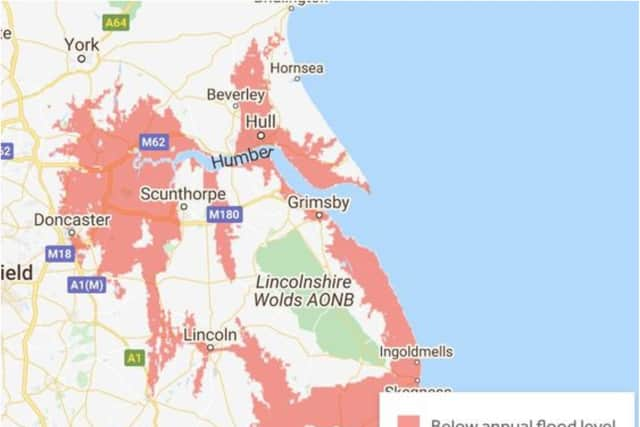Doncaster could be underwater by 2050, shock new climate change flood map reveals
and live on Freeview channel 276
Flooding is among one of the biggest threats posed by climate change, with many low-lying areas likely to suffer under rising sea levels.
And Doncaster could be a seaside resort in less than 30 years according to climate change experts who have released maps showing how huge swathes of the town could be swallowed up by water.
Advertisement
Hide AdAdvertisement
Hide AdAs the world continues to heat up, melting icecaps will see sea levels rise – with the mean global sea level going up by eight to nine inches (21 – 24cm) since the 19th century.


Experts say global emissions could push this total by another 1.5 metres (1,500cm) come 2050 – with vast swathes of the British coastline ending up underwater.
The data from Climate Central has exposed the areas that will have to reckon with encroaching seas.
And Doncaster is one of several areas which could drift under the annual flood level, which officials define as the shoreline water level local coastal floods exceed at least once a year.
Advertisement
Hide AdAdvertisement
Hide AdClimate Central says the waters will travel up the Humber, pushing several low-lying areas on its banks under the flood level, encompassing Doncaster, Scunthorpe, Howden and Selby.
A map, published by Climate Central, shows that the majority of the borough – including Thorne, Bentley, Armthorpe and Cantley - will be underwater by the year 2050.
The map shows floodwater from the North Sea and the River Humber engulfing huge areas of Yorkshire and Lincolnshire – with Doncaster right on the edge of the surging waters.
In 2019, a report found the UK to be among the top 20 countries most likely to be impacted by subsequent surging sea levels if global temperatures continued to rise as predicted.
Advertisement
Hide AdAdvertisement
Hide AdIt "As humanity pollutes the atmosphere with greenhouse gases, the planet warms.
"And as it does so, ice sheets and glaciers melt and warming sea water expands, increasing the volume of the world's oceans.
"The consequences range from near-term increases in coastal flooding that can damage infrastructure and crops to the permanent displacement of coastal communities."